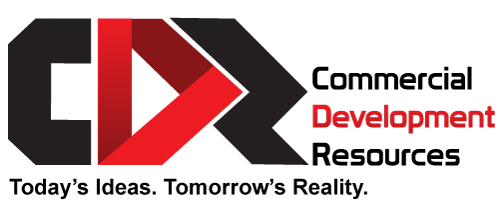Integrating EV Charging Stations into Land Development Projects
More and more electric vehicles are on the road each year, which creates a pressing need for infrastructure to support these vehicles, particularly EV charging stations. Incorporating charging stations into a land development project requires collaboration between the development team, civil engineers, dry utility consultants, and the utility company. The process of interfacing with the utility company to obtain additional electric infrastructure is often lengthy and complex. It is the area of specialty of a dry utility consultant. This article discusses their role in assessing a project’s infrastructure needs, preparing, submitting, and following up on work orders with the utility company, as well as coordinating equipment ordering upon utility project approval.
Introduction to EV Charging Integration
Planning and implementing EV charging stations into a land development project is a multi-pronged process involving the project’s development team, civil engineers, a dry utility consultant, and the local electric utility. When a land development project includes the addition of EV charging stations, additional electrical power is typically required. The amount of power needed depends on the number and type of chargers, as well as the capacity of any existing site electric infrastructure. Dry utility consultants serve as a liaison between the project development team and the local electric utility. Initially, the dry utility consultant will gather the required information from the project development team to initiate the electric utility’s extensive submittal process on their client’s behalf. The consultant will assist the development team and work with the utility to determine the anticipated electric infrastructure needed from the utility to support the project. Additionally, they stay informed about the latest regulatory changes and utility requirements, such as those outlined in Resolution E-5167, which are relevant to their client’s infrastructure projects.
Additional Power Requires Infrastructure
When EV charging stations are implemented as part of a new or existing project, there may be significantly more power required at the site. The project development team is responsible for determining the number and the type of chargers to be placed. The development team will work with an electrical engineer and/or EV consultant, who will take this information and complete load calculations for the project.
What is a Dry Utility Consultant?
A dry utility consultant is the liaison between the project development team and the utility company. This consultant uses the load calculations to determine the anticipated electrical infrastructure needed for the project. These requirements are application-specific, depending on the number and type of chargers to be installed, as well as any existing utilities at the site. The consultant finalizes the required electric infrastructure with the utility and works through the utility’s application process to obtain it.
Choosing Between Level 2 and Level 3 DC Fast Chargers
The type of EV charger selected for the site has broad implications for the power requirements to serve it. The project development team generally chooses between level 2 and level 3 DC fast chargers for implementation. Level 2 chargers require less power than level 3 DC fast chargers, but the tradeoff is that they require more time to charge the EV battery. Similarly, the electrical infrastructure needed for level 3 DC fast chargers is significantly higher. The EPA and the US Department of Energy both provide further information on the distinctions between charger types and their general operation.
Sizing a Transformer to the Load
The transformer and the overall electric infrastructure must be sized to handle the project’s load. For projects with smaller load requirements, sometimes the existing transformer on site will suffice or it can be upgraded. In other cases, particularly for larger load projects, an additional work order for a new transformer and service is required.
Obtaining a New Transformer Requires a New Work Order with the Utility
If an upgrade or new transformer is needed, the utility requires submission of a new work order request. This is the same type of work order that is required for any new building service, and therefore the dry utility consultant will work with the project development team to gather all of the documentation including site plans, electrical sheets, load calculations, and AutoCAD files in preparation for the project’s submittal. Once submitted to the electric utility, this will initiate a lengthy work order process in the utility’s system. This process to obtain a design from the utility typically spans between five and eight months. Once a design is returned, the project can move forward to construction.
Because the wait period is so long, it is imperative to submit accurate and complete paperwork to the utility as early as possible. CDR dry utility consultants will often spend a significant amount of time supporting clients finalizing project scope to streamline the utility application process.
As an example, CDR recently helped a client consider the tradeoff of installing level 2 versus level 3 DC fast chargers. While level 3 DC fast chargers may seem like an easy choice, they often require the placement of a second site transformer, which may have further ramifications for the site’s layout and project timeline.
Programs and Incentives from the Utility
In addition to supporting clients in understanding anticipated electrical infrastructure, CDR dry utility consultants stay up to date with any financial incentive programs offered to ease the financial burden of a project.
Electric Vehicle (EV) Infrastructure Rule
Utilities are actively expanding their services to include EV charging programs in response to evolving electric vehicle infrastructure requirements. One of these incentive programs that was introduced in California to establish new Electric Vehicle (EV) Infrastructure Rules is known as Resolution E-5167. For SCE and PG&E this is known as Rule 29, while SDG&E refers to it as Rule 45.This resolution is designed to help offset the cost to developers and simplify the design process for implementing EV charging stations at commercial, industrial, or multi-family residential sites. Available since the spring of 2022, the utility supports eligible projects by installing, owning, and maintaining the infrastructure up to the customer-installed meter panel. While there are some basic requirements for eligibility, the program can offer significant cost savings. CDR Dry Utilities can assist clients through the program’s application process.
EV Charging Project Roll-Out Example
A recent project completed by CDR dry utility consultants demonstrates the process discussed in this article.
A client approached CDR about a transformer upgrade project to support a new EV charging station, which involved the addition of a 1200 Amp panel to the site. CDR reviewed the project and contacted the electric utility company to request information on the existing transformer’s capacity. Unfortunately, the capacity was insufficient to accommodate the additional load. Furthermore, due to the size of the existing slab box, a larger transformer could not be placed without significant infrastructure upgrades. CDR recommended the addition of a second transformer to the site and submitted a proposal to the utility company for design approval. While the utility was in the process of planning the preliminary layout for the new service, the client proceeded with finalizing the project plans with the city. The electric utility raised additional questions about the project and eventually returned a preliminary design for review. The client reviewed the design and returned it to the utility to be finalized. With guidance from the CDR consultant, the client simultaneously proceeded with switchgear submittals, recognizing the long lead times for this equipment as well. Their electrical contractors drafted a plan that illustrated the proposed equipment to meet the utility’s requirements. The plan was then submitted to the utility for review and approval. Once approved, equipment was immediately ordered to mitigate the long lead time issue. Upon release of the final design by the utility company, the client was able to move into the construction phase of the project.
A dry utility consultant streamlines the complex, lengthy process of obtaining additional electrical infrastructure from the utility company. They work alongside the design team determining a project’s infrastructure requirements, compiling and submitting infrastructure proposals to the utility, handling further questions raised by the utility, and coordinating additional equipment ordering based on utility company project approval. In addition, they remain abreast of any incentive programs that may be relevant. In so doing, they offer their clients the best chance at moving into construction as fast as possible.
Expert Utility Management for EV Charging
Don’t let utility challenges slow down your progress—partner with a dry utility consultant today and ensure your project transitions smoothly into construction. By leveraging their expertise, you can navigate the intricacies of utility infrastructure with ease and confidence. Contact us now to learn more about how we can help streamline your utility infrastructure process!


